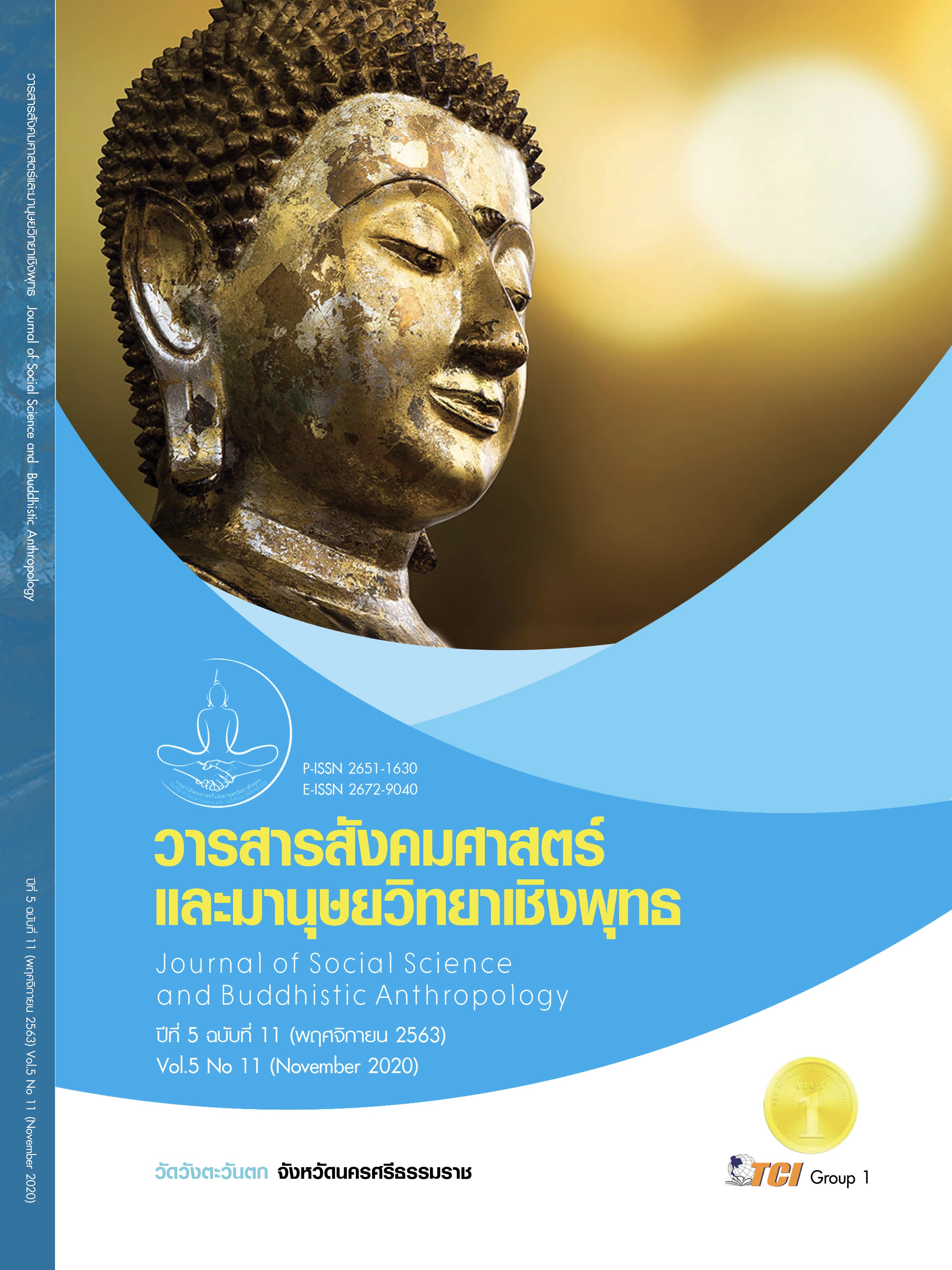THE PATTERN OF USAGE PROSODY IN VINAYAVINICCHAYA AND UTTARAVINVICCHAYA
Keywords:
Pattern, Prosody, Vinayavinicchaya, UttaravinvicchayaAbstract
The objectives of this research article were to 1) study the pattern of prosody used in Vinayavinicchaya and Uttaravinvicchaya 2) study prosody in Vinayavinicchaya and Uttaravinvicchaya and 3) To analyze the usage of prosody in Vinayavinicchaya and Uttaravinvicchaya. It is the documentary research. The result is found that Vinayavinicchaya and Uttaravinvicchaya is composed by Buddhadatta. It is the commentary of Vinayapitaka. Commentary format is a type of collection. It is composed in verse. Prosody used the principles is derived from the Vuttothaya scriptures. Prosody patterns used in composing includes mattasamaka vijjummala rummavati indavajira upajati vamsattha totaka vasantatilaka aparavatta patthayavatta and vipula. The usage of the prosody was found to be related to the structure of the content explanation. The beginning of the scripture is the beginning chapter said humility to the jewels. The content of the scriptures and the last part of the scriptures are a witchcraft settlement chapter. All three parts of the scriptures are chosen a different prosody by the evangelists. In the analysis of prosody used in writing scripture, it was found that the content of part was different prosody from the text. Therefore, Prosody used in this section strictly complies with the requirements of that particular scheme. The content is the decision of the Vinaya. Therefore, Patthayavatta and Vipula ared popularly because of these two types of prosody, there are very easy. It is commonly used in composing stories, and at the end, the evangelists also use another style. It is the same regulations as the rules used in the section at the beginning of the content
References
คณาจารย์มหาวิทยาลัยมหาจุฬาลงกรณราชวิทยาลัย. (2560). พระวินัยปิฎก (ฉบับปรับปรุง). (พิมพ์ครั้งที่ 3). พระนครศรีอยุธยา: สำนักพิมพ์มหาวิทยาลัยมหาจุฬาลงกรณราชวิทยาลัย.
จำเนียร แก้วกู่. (2539). หลักวรรณคดีบาลีวิจารณ์. กรุงเทพมหานคร: สำนักพิมพ์โอเดียนสโตร์.
จิตตภาวันวิทยาลัย. (2517). วุตโตทัยปกรณ์. ใน หนังสือพิมพ์ในงานพระราชทานเพลิงศพ สมเด็จพระสังฆราช ปุณณสิริมหาเถระ. วัดเทพสิรินทราวาส.
พระเจ้าวรวงศ์เธอ กรมหลวงชินวรสิริวัฒน์ สมเด็จพระสังฆราชเจ้า. (2530). พระคัมภีร์อภิธานัปปทีปิกา ภาษาบาลีแปลเป็นไทย. (พิมพ์ครั้งที่ 3). กรุงเทพมหานคร: โรงพิมพ์มหามกุฎราชวิทยาลัย.
พระธรรมโมลี (สมศักดิ์ อุปสโม). (2546). งานวิจัยการศึกษาเชิงวิเคราะห์พระคาถาธรรมบท เล่ม 1-2. นครปฐม: วิทยาเขตบาฬีศึกษาพุทธโฆส.
พระปิฎกเมธี (ทองดี ปญฺญาวชิโร). (2560). คู่มือประกอบการแต่งฉันท์ภาษามคธ ประโยค ป.ธ.8. นครปฐม: เอ็นเจ กราฟิกปริ้น.
พระมหาอุเทน ปัญญาปริทัตต์. (2540). ฉันทปรารมภ์. กรุงเทพมหานคร: เลี่ยงเชียง.
พระราชวิสุทธิโมลี (ทองดี สุรเตโช). (2527). คู่มือการศึกษาบาลี. กรุงเทพมหานคร: กรมการศาสนากระทรวงศึกษาธิการ.
พระสังฆรักขิตมหาสามี. (2512). สุโพธาลังการ (แปลโดย นาวาอากาศเอกแย้ม ประพัฒน์ทอง). กรุงเทพมหานคร: โรงพิมพ์รุ่งเรืองธรรม.
พัฒน์ เพ็งผลา. (2542). ประวัติวรรณคดีบาลี. (พิมพ์ครั้งที่ 4). กรุงเทพมหานคร: สำนักพิมพ์มหาวิทยาลัยรามคำแหง.
ไพฑูรย์ พรหมวิจิตร. (2536). ฉันทศาสตร์ไทย. กรุงเทพมหานคร: มูลนิธิธนาคารกรุงเทพ.
มหาจุฬาลงกรณราชวิทยาลัย. (2535). พระไตรปิฎกภาษาบาลีฉบับมหาจุฬาเตปิฏกํ 2500. กรุงเทพมหานคร: โรงพิมพ์มหาจุฬาลงกรณราชวิทยาลัย.
มหาจุฬาลงกรณราชวิทยาลัย. (2544). วินยวินิจฺฉโย อุตฺตรวินิจฺฉโย. กรุงเทพมหานคร: โรงพิมพ์วิญญาณ.
Childers, R. C. (1974). Dictionary of the Pali language. Rangoon: Buddhasasana Council.
Macdonell Arthur Anthony. (1979). A Sanskrit Grammar for Students. Delhi: Motilal Banarasidass.








